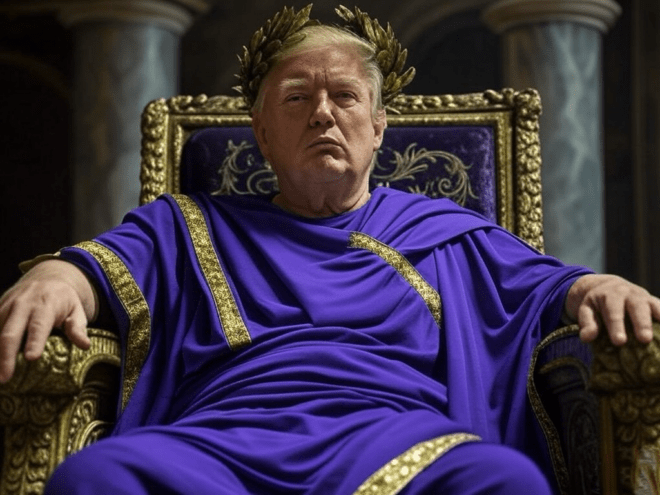
Introduction
In an era where global alliances are increasingly fragile, the behaviour of the United States under President Donald Trump has raised profound questions about the value of diplomatic engagement. Recent events, such as Trump’s repeated refusal to meet with Australian Prime Minister Anthony Albanese, have ignited a firestorm in Australia’s right-wing media, with outlets decrying the snub as a diplomatic catastrophe. Yet, one must ask: given Trump’s confrontational attitude, his use of tariff threats as leverage over allies, and his erratic decisions, like halting weapons shipments to Ukraine amid an ongoing war, is a meeting with him truly worth the effort? Trump’s approach often resembles that of a mafia boss rather than a statesman, wielding economic coercion to extract concessions while undermining long-standing partnerships. This pattern erodes trust, leaving nations wondering why they should rely on his word for anything. Compounding this is the broader perception of the United States as an irrational actor – a “dog with rabies,” logically erratic and driven by extremes. This irrationality extends domestically, where right-wing elements have elevated religion to absurd heights, as seen in the deification of figures like Charlie Kirk, a manifestation of the stupidity permeating conservative Christianity. This post explores these themes in depth, arguing that Trump’s leadership has transformed America into an unreliable global player, making strategic disengagement a rational choice for many nations. Through a detailed examination of specific incidents, historical contexts, and broader implications, we will uncover how these dynamics threaten international stability and domestic coherence.
To fully appreciate the gravity of the situation, it is essential to contextualise Trump’s second term within the broader arc of his political career. Trump’s first presidency from 2017 to 2021 was marked by similar disruptions: withdrawing from international agreements like the Paris Climate Accord and the Iran nuclear deal, imposing tariffs on allies such as Canada and the European Union, and engaging in public feuds with world leaders. His return to office in 2025 has amplified these tendencies, fuelled by a more emboldened Republican base and a polarised domestic landscape. The 2024 election, won amid controversies over voter suppression and media influence, set the stage for a foreign policy that priorities personal loyalty over mutual benefit. This has not only alienated traditional allies but also encouraged adversaries like Russia and China to exploit perceived weaknesses in the Western alliance system. As we delve into specific examples, such as the Albanese snub, tariff threats, and Ukraine aid fiasco, it becomes clear that Trump’s tactics are not mere aberrations but a deliberate strategy that undermines global trust.
Trump’s Snub of Albanese: A Diplomatic Slight and Media Outrage
The saga of Trump’s refusal to meet with Anthony Albanese exemplifies the capricious nature of his foreign policy. As of September 2025, during the UN General Assembly in New York, Albanese was notably absent from Trump’s official meeting schedule, a decision confirmed by the White House. This was not an isolated incident; earlier attempts by Albanese to secure a bilateral discussion, including during the G7 summit, were rebuffed, with Australian officials circulating internal memos acknowledging the failure. The snub appears tied to Australia’s stance on recognising Palestine, which the Trump administration has criticised as “rewarding Hamas.” Such linkages highlight Trump’s tendency to personalise diplomacy, using meetings as rewards or punishments based on alignment with his views.
In Australia, right-wing media has erupted in indignation, framing the incident as a humiliation for the nation and a failure of Albanese’s leadership. Outlets like Sky News have labelled it a “brutal snub,” with commentators like Andrew Clennell decrying the lack of a one-on-one as evidence of deteriorating US-Australia relations. The Australian Financial Review echoed this, noting the White House’s criticism of Australia’s Palestinian policy while confirming no meeting would occur. Opposition figures, such as Sussan Ley, have seized on the issue to attack Albanese, arguing that he has allowed the alliance to “drift.” Social media and forums, including Reddit discussions, reflect similar sentiments, with users lamenting Australia’s diminished regional presence.
However, this outrage overlooks a critical question: is pursuing a meeting with Trump worth the diplomatic capital? Trump’s history suggests that such engagements often yield little beyond photo opportunities, while exposing leaders to his unpredictable demands. For instance, Albanese’s advocacy for a two-state solution in the Middle East, expressed at the UN, directly clashed with Trump’s pro-Israel stance, leading to the snub. Right-wing Australian media’s “blue bloody murder” screams may stem more from ideological alignment with Trump than genuine concern for national interests. After all, Australia’s conservative press has long echoed US Republican talking points, amplifying Trump’s narrative while ignoring how his actions undermine global stability. This media frenzy serves as a distraction from the real issue: Trump’s unwillingness to engage constructively with allies who don’t fully submit to his agenda.
Expanding on this, the snub is part of a broader pattern where Trump prioritises personal vendettas over alliance-building. Documents leaked from Australian foreign affairs reveal frantic efforts to arrange a meeting, only to be met with silence or outright rejection. This has left Albanese hoping for a mere handshake at a multilateral event, a far cry from the substantive discussions needed for issues like AUKUS or Indo-Pacific security. The right-wing backlash in Australia, fuelled by outlets like News.com.au, portrays Albanese as weak, but it fails to critique Trump’s role in eroding trust. Ultimately, chasing a meeting with a leader who treats diplomacy as a transactional game may demean Australia more than benefit it.
To understand the deeper implications, consider the historical context of US-Australia relations. The ANZUS treaty of 1951 has long been the cornerstone of this alliance, providing mutual defence commitments that have seen action in conflicts from Vietnam to Afghanistan. Under previous administrations, bilateral meetings were routine, fostering cooperation on trade, intelligence sharing via the Five Eyes network, and regional security against China’s rise. Trump’s snubs disrupt this continuity, forcing Australia to diversify its partnerships, such as strengthening ties with Japan and India through the Quad. Moreover, the media outrage in Australia reveals a domestic political divide: while right-wing voices clamour for closer alignment with Trump, progressive elements argue for greater independence, viewing the US as increasingly unreliable. This internal tension could lead to policy shifts, like increased defence spending or neutral stances on US-led initiatives, further fragmenting the alliance. In essence, the Albanese snub is not just a personal slight but a symptom of a decaying partnership, where the effort to engage yields diminishing returns.
Trump’s Mafia-Like Tactics: Tariffs as a Weapon Against Allies
Trump’s foreign policy is characterised by coercive tactics that evoke organised crime rather than presidential statesmanship. He routinely dangles tariff threats over foreign leaders’ heads, demanding concessions on trade, security, or policy alignment. In 2025 alone, Trump has escalated tariffs on multiple fronts, including doubling steel and aluminium duties to 50% on most countries except the UK, and threatening 100% tariffs on foreign-made films to protect US industries. These moves are not isolated; Trump has sent tariff threat letters to over a dozen governments, including key Asian allies, demanding trade adjustments by August 1 or facing penalties. Such actions have caused “shock, frustration, and anger” among world leaders, who view them as extortionate.
This approach undermines the very alliances America claims to cherish. For example, Trump’s threats against Mexico and Canada on imports echo his first-term strategies, where he used tariffs to secure border concessions. In Europe, similar letters have prompted responses from leaders wary of escalating trade wars. Even allies like Brazil face 50% tariffs on goods, potentially inflating US consumer costs for essentials. Taiwan, a critical manufacturing hub, is reeling from tariffs that threaten its economy, despite its strategic importance against China.
Critics argue this “mafia” style, demanding loyalty through economic pain, erodes global trust. Chatham House analyses note that confronting Trump risks retaliation, while compliance yields fleeting gains. NPR’s tracking of Trump’s trade deals shows a mix of threats and partial resolutions, but the overall flux creates uncertainty. For nations like Australia, already facing snubs, aligning with such tactics could mean sacrificing sovereignty for unreliable assurances. Why trust a leader who treats international relations as a protection racket?
Delving deeper, Trump’s tariff strategy draws from his “America First” doctrine, which views trade deficits as national security threats. In his first term, he imposed tariffs on $380 billion worth of Chinese goods, sparking a trade war that cost US farmers billions and led to bailouts. In 2025, this has expanded globally, with threats against the EU for digital taxes and India for pharmaceutical exports. The economic fallout is multifaceted: while some US industries like steel benefit from protectionism, consumers face higher prices, and global supply chains disrupt, exacerbating inflation. Allies respond variably – Canada has retaliated with its own tariffs, while Japan seeks exemptions through negotiations. This coercive diplomacy mirrors mafia protection rackets, where “payments” (concessions) ensure temporary peace, but the threat lingers. Long-term, it accelerates deglobalisation, pushing countries toward regional blocs like the Comprehensive and Progressive Agreement for Trans-Pacific Partnership (CPTPP), excluding the US For smaller nations like Australia, dependent on US markets for exports like beef and wine, these threats amplify vulnerability, questioning the value of alliance loyalty when economic stability is at stake.
Furthermore, the psychological impact on international relations cannot be overstated. Leaders must navigate Trump’s unpredictability, often preparing multiple scenarios for negotiations. This uncertainty diverts resources from pressing issues like climate change and pandemics, fostering a world order where power trumps partnership. Historical parallels abound: Nixon’s “madman theory” aimed to unsettle adversaries, but Trump’s version alienates friends, weakening collective security. As allies hedge their bets – Europe investing in autonomous defence, Asia deepening intra-regional ties, the US isolates itself, ironically undermining the very influence Trump seeks to assert.
Ukraine Betrayal – Trump’s Erratic Handling of Military Aid in 2025
The saga of US military aid to Ukraine under President Donald Trump’s second term in 2025 exemplifies the profound unreliability and capriciousness of his foreign policy. What began as a campaign promise to swiftly end the Russia-Ukraine war through negotiation devolved into a series of abrupt halts, partial resumptions, and conditional approvals that left Ukraine vulnerable, emboldened Russia, and strained alliances. This “betrayal” – halting aid mid-war – not only disrupted Ukraine’s defence efforts but also signalled to global partners that America’s commitments are subject to political whims rather than strategic consistency. Below, I expand on this analysis with a detailed timeline, examination of motivations, battlefield impacts, international reactions, and broader implications for trust in US leadership.
Timeline of Trump’s Ukraine Aid Decisions in 2025
Trump’s approach to Ukraine aid shifted dramatically from his first term, where he provided lethal weapons like Javelins but faced impeachment over withholding aid for political leverage. In his second term, starting January 20, 2025, Trump issued an executive action to reevaluate and realign US foreign aid, effectively pausing new disbursements for a 90-day review period. This set the stage for volatility.
By early March 2025, following a tense Oval Office meeting between Trump and Ukrainian President Volodymyr Zelenskyy, the administration suspended all US military aid, blocking billions in shipments. This halt came amid ongoing Russian aggression, forcing Ukraine to ration supplies and scale back operations. Just days later, on March 11, the suspension was lifted, with the US resuming aid and intelligence sharing, coinciding with Ukraine signalling openness to a 30-day ceasefire. However, aid resumption was tied to Zelenskyy’s conditional agreement to the ceasefire, which Russia promptly rejected, stalling progress.
The pattern of inconsistency continued into summer. In July 2025, the Pentagon confirmed pauses on specific weapons shipments, including air defence interceptors and precision-guided munitions, as part of a broader military spending review. Trump dodged questions on the decision, with administration explanations shifting amid bipartisan criticism. By July 9, the White House and State Department announced a resumption of shipments, touting it as Trump’s directive to provide previously agreed-upon weapons under Biden, plus new ones. This included joint US-Ukraine gunpowder manufacturing deals and classified agreements signed in Rome.
As of September 2025, the administration has approved the first aid packages under a new mechanism called the Prioritised Ukraine Requirements List (PURL), where NATO allies fund purchases from US stockpiles. This includes two $500 million shipments, potentially including air defence systems, cleared by Deputy Defence Secretary Elbridge Colby. Additionally, Trump has floated ideas like a full oil embargo on Russia and secondary sanctions with up to 500% tariffs to pressure Moscow. Other moves include $310.5 million for F-16 training, a $300 million Presidential Drawdown Authority (PDA) package with Patriots and medium-range missiles, and an increase in Ukraine Security Assistance Initiative (USAI) funding to $500 million extended to 2028. Trump also approved selling three Patriot batteries and a $10 billion Foreign Military Sales (FMS) deal for 17 more.
Critics note that much of this “new” aid stems from Biden-era approvals or ally-funded mechanisms, not direct US grants. For instance, the PURL program shifts costs to Europe, aligning with Trump’s demands for allies to spend more (e.g., up to 5% of GDP on defence).
Motivations Behind the Fluctuations
Trump’s decisions appear driven by a mix of “America First” isolationism, personal deal-making, and political posturing. He labelled Ukraine aid a “money pit” during his campaign, vowing to end the war in “24 hours” – later clarified as aspirational. The initial March suspension followed the Trump-Zelenskyy meeting, seemingly as leverage to push for ceasefires and territorial concessions. Resumptions often tied to diplomatic gestures, like Ukraine’s ceasefire openness or ally funding commitments.
Publicly, Trump frames resumptions as demonstrations of strength to force Russia to negotiate, coupling aid with threats like tariffs. However, critics argue this exposes waste in aid distribution and prioritises US defence industry profits over Ukrainian needs. Social Media users have debated whether aid is truly “new” or repackaged, with some accusing Trump of continuing Biden’s policies under different labels.
To further dissect these motivations, consider Trump’s domestic political landscape. His base, sceptical of foreign entanglements, applauds pauses as fiscal responsibility, while hawks within the GOP push for escalation against Russia. This internal tension leads to policy whiplash, where aid serves as a tool for electoral messaging rather than consistent strategy. Historically, Trump’s admiration for strongmen like Putin, evident in his 2016 campaign praise – may influence leniency toward Russia, viewing Ukraine as a bargaining chip in broader US-Russia relations. Economic considerations also play a role: by shifting costs to allies, Trump bolsters US arms manufacturers like Lockheed Martin and Raytheon, who benefit from increased sales. This profiteering angle, often overlooked, reveals how aid decisions intertwine with corporate interests, further eroding the moral high ground of US foreign policy.
Battlefield and Humanitarian Impacts
The aid pauses had immediate consequences. In March-June 2025, Ukraine faced shortages, leading to rationed shells and slowed counteroffensives. Russian forces advanced in Donetsk and Zaporizhia, reclaiming parts of the Kursk salient. Resumptions helped stabilise lines, but the war dragged on, with 9.5 million Ukrainians displaced and high casualties. Analysts note that while aid hasn’t stopped Russian advances, it prolongs the conflict, potentially costing hundreds of thousands of lives.
Ukraine’s grit persists, with counterattacks inflicting costs on Russia, but dependency on erratic US support heightens vulnerability. Europe has stepped up, providing €167 billion since 2022, but Trump’s shifts force Kyiv to seek alternatives like domestic production.
Expanding on the humanitarian toll, the pauses exacerbated a crisis already marked by war crimes, infrastructure destruction, and economic collapse. Cities like Kharkiv and Odesa suffered intensified bombardments during aid lulls, leading to civilian deaths and a refugee surge into Europe. The United Nations estimates over 10,000 civilian casualties in 2025 alone, with aid fluctuations contributing to preventable losses. On the battlefield, Ukrainian forces, equipped with Western weapons like HIMARS and ATACMS during resumptions, achieved tactical victories, but the stop-start nature hindered strategic planning. Russia’s adaptation, using North Korean troops and Iranian drones, exploited these gaps, prolonging a war that has cost both sides dearly. For Ukraine, this unreliability fosters despair, with soldiers reporting morale dips during pauses, underscoring how US indecision translates to human suffering.
International and Domestic Reactions
Ukraine breathed a “sigh of relief” at July resumptions, with politicians and media celebrating the influx. However, allies like the UK and Nordic countries have compensated for US gaps, forming coalitions and signing long-term pacts. European leaders, including Ursula von der Leyen, proposed €800 billion in defence spending by 2029 to counter US unreliability.
Domestically, Trump’s base is divided: some criticise continued aid as wasteful, while others see it as necessary deterrence. Social media discussions highlight frustration, with users questioning if aid aligns with “peace” rhetoric. Bipartisan criticism in Congress focuses on the pauses’ legality and strategic folly.
Globally, reactions vary from dismay to adaptation. NATO summits in 2025 saw heated debates, with Eastern European nations like Poland advocating for direct intervention, while Western powers urged caution. China’s observer status in these dynamics benefits from US disarray, accelerating its influence in global forums. Domestically, US polls show declining support for Ukraine aid, from 60% in 2022 to under 40% in 2025, reflecting fatigue manipulated by Trump’s narrative. This polarisation feeds into broader extremism, linking foreign policy failures to domestic unrest.
Broader Implications: Erosion of Trust
This erratic handling underscores why no country should trust Trump’s word. Aid fluctuations, from full suspension to ally-funded resumptions, treat Ukraine as a bargaining chip, echoing mafia-like tactics. It signals to adversaries like Russia that US resolve wavers, potentially prolonging conflicts. For allies, it prompts diversification, as seen in Europe’s independent arming efforts. Ultimately, this “rabid dog” unpredictability undermines global stability, making strategic disengagement from Trump-led diplomacy a rational choice for nations valuing reliability.
The Ukraine case serves as a cautionary tale for other conflict zones, like Taiwan or the Middle East, where US commitments could similarly falter. It accelerates a multipolar world, where powers like the EU and BRICS fill voids left by American retreat.
Why No Country Should Trust Trump’s Word
The cumulative effect of these actions is a profound erosion of trust. Nations must weigh whether Trump’s promises hold value when his policies flip-flop. In Ukraine, initial halts gave way to partial resumptions, but the damage was done. Tariff threats similarly create instability, with allies like the EU and Mexico scrambling to respond. Trump’s word, often contradicted by actions, leaves partners vulnerable.
This unreliability extends to broader geopolitics. His snubs, like with Albanese, signal that alliances are conditional on subservience. Why invest in diplomacy with a leader whose commitments are as stable as quicksand? Historical precedents, such as Trump’s abandonment of Kurdish allies in Syria in 2019, reinforce this pattern, where expediency trumps loyalty. In 2025, similar dynamics play out in NATO, where Trump’s demands for higher spending have led to compliance but resentment, fracturing unity. For developing nations, aid promises, tied to policy alignment, foster cynicism, pushing them toward alternatives like China’s Belt and Road Initiative. Trust, once broken, is hard to rebuild; Trump’s tenure risks long-term isolation for the US, as allies forge independent paths.
Moreover, the psychological dimension of trust erosion affects global markets and security. Stock markets fluctuate with Trump’s tweets or announcements, creating volatility that hampers investment. In security terms, deterred adversaries like Iran or North Korea may test boundaries, knowing US responses could waver. This creates a dangerous precedent, where international law yields to power plays, undermining institutions like the UN.
The United States as a Rabid Dog: Irrationality and Erratic Behaviour
The US under Trump behaves erratically, like a “dog with rabies”— logically inconsistent and dangerously unpredictable. Foreign policy swings from isolationism to interventionism, driven by personal impulses rather than strategy. Domestically, this manifests in cultural wars, amplifying divisions.
Globally, this irrationality alienates allies. Tariff wars and aid pauses reflect a nation prioritising short-term gains over long-term stability, fostering a perception of America as unhinged. Examples abound: Trump’s abrupt withdrawal from WHO during the pandemic, or his 2025 threats against the ICC for investigating US actions. This erraticism stems from a blend of populism and authoritarianism, where decisions cater to a base fuelled by misinformation.
Domestically, irrationality peaks in policy reversals, like environmental deregulation amid climate crises, or immigration bans that ignore economic needs. The “rabies” metaphor captures the self-destructive nature: actions that harm US interests, like alienating allies, weaken its global standing. As nations observe this, they prepare for a post-American order, investing in multilateralism without US leadership.
The Deification of Charlie Kirk: Religious Extremism in Right-Wing America
Domestically, Trump’s America has elevated religion to “unbelievably stupid heights,” exemplified by the deification of Charlie Kirk following his assassination in September 2025. Kirk, founder of Turning Point USA and a Christian nationalist, was killed while speaking, prompting evangelical leaders to hail him as a martyr. Some called for vengeance, viewing his death as persecution for advocating a “Christian state.” This elevation fuses faith with politics, cloaking right-wing ideas in religious sanctity.
Kirk’s journey from secular Republican to Christian culture warrior mirrors the right’s embrace of nationalism. His posthumous legacy divides Christians, with some grappling with his controversial views on race and faith. This “deification” manifests the stupidity of right-wing religion, prioritising ideology over reason and contributing to America’s irrational image.
Expanding, Kirk’s rise through Turning Point USA mobilised young conservatives, blending evangelicalism with anti-woke rhetoric. His assassination, amid rising political violence, sparked conspiracy theories blaming “deep state” or leftists, fuelling rallies and memorials. Figures like Franklin Graham eulogised him as a “modern prophet,” while churches incorporated his teachings into sermons. This phenomenon reflects a broader trend: the fusion of Christianity with MAGA politics, where biblical literalism justifies policies like abortion bans and anti-LGBTQ laws. Critics within Christianity decry this as idolatry, diverging from Jesus’ teachings of love and humility. The stupidity lies in its anti-intellectualism, rejecting science on evolution or climate, mirroring Trump’s disdain for experts. This religious fervour exacerbates domestic divisions, linking to foreign policy through isolationist “America as chosen nation” narratives, alienating secular allies.
Conclusion
Trump’s snubs, tariff threats, Ukraine betrayals, and the broader irrationality of US policy under his leadership make engagement questionable. The deification of Kirk highlights domestic extremism fuelling this chaos. Nations like Australia should reconsider chasing unreliable alliances, opting instead for independent strategies. Trusting Trump’s word is a gamble not worth taking in a world demanding stability. As the US grapples with its internal demons, the global community must adapt, fostering resilience against such volatility. Ultimately, the perils of Trumpism serve as a wake-up call for renewed multilateralism, where no single power’s whims dictate the future.



